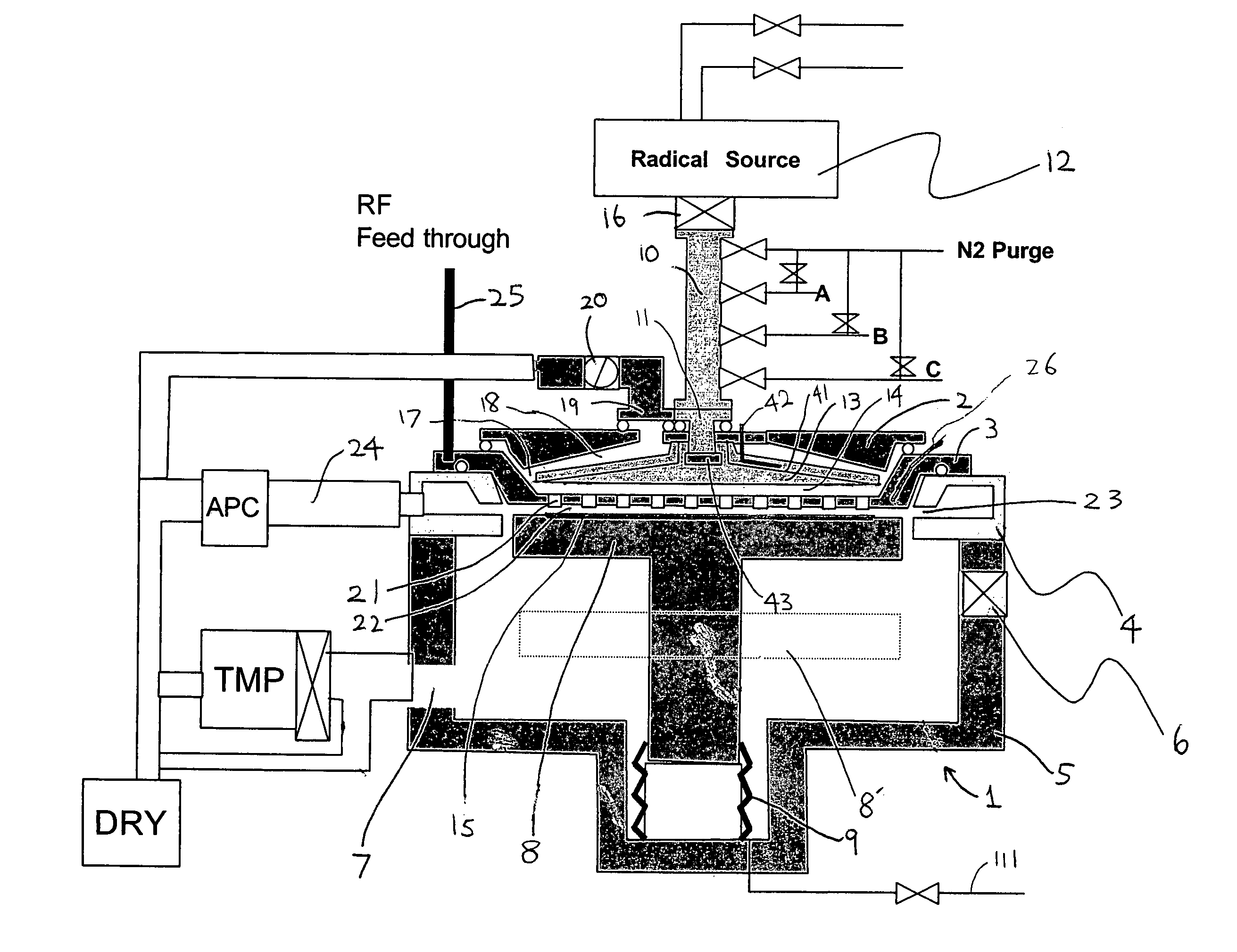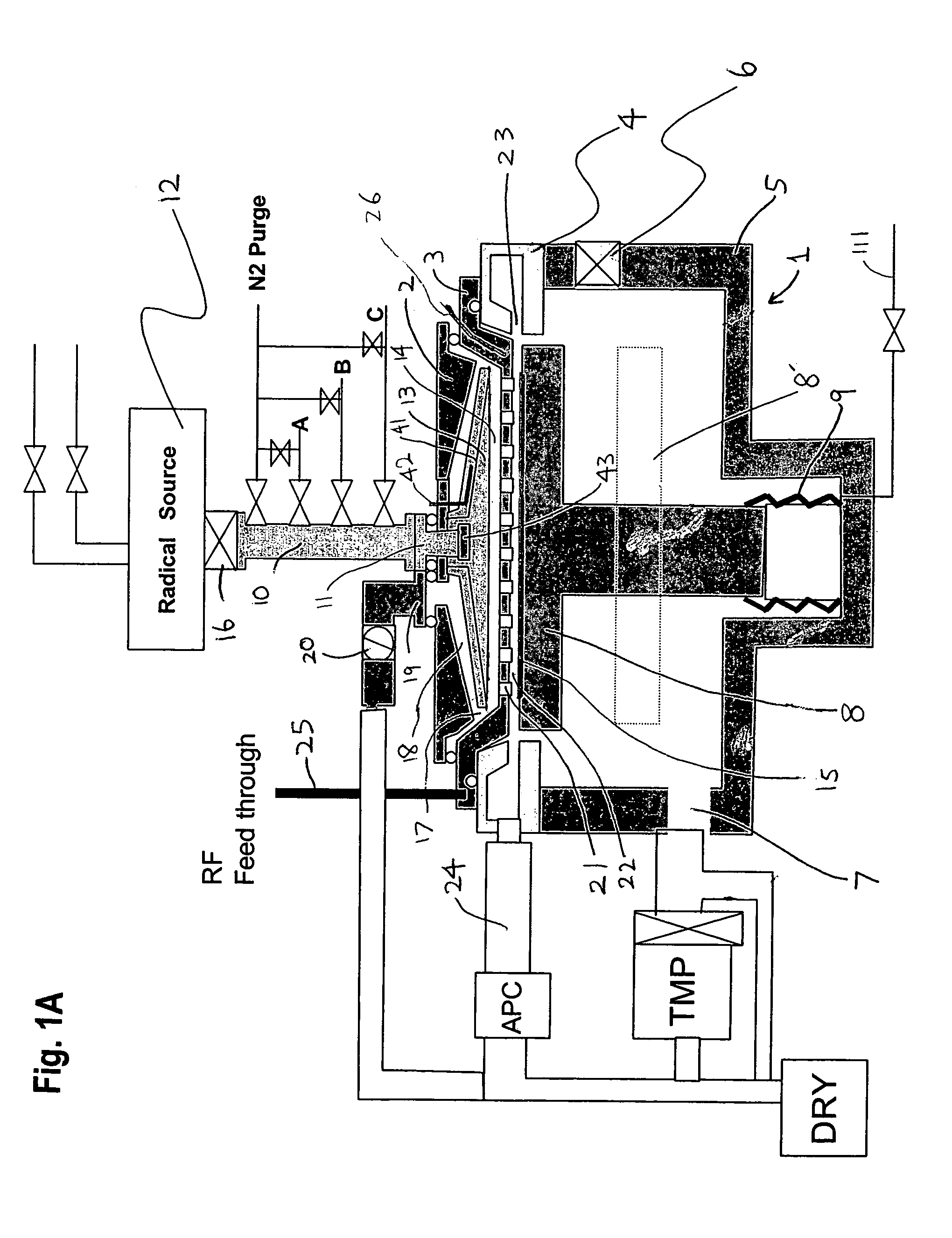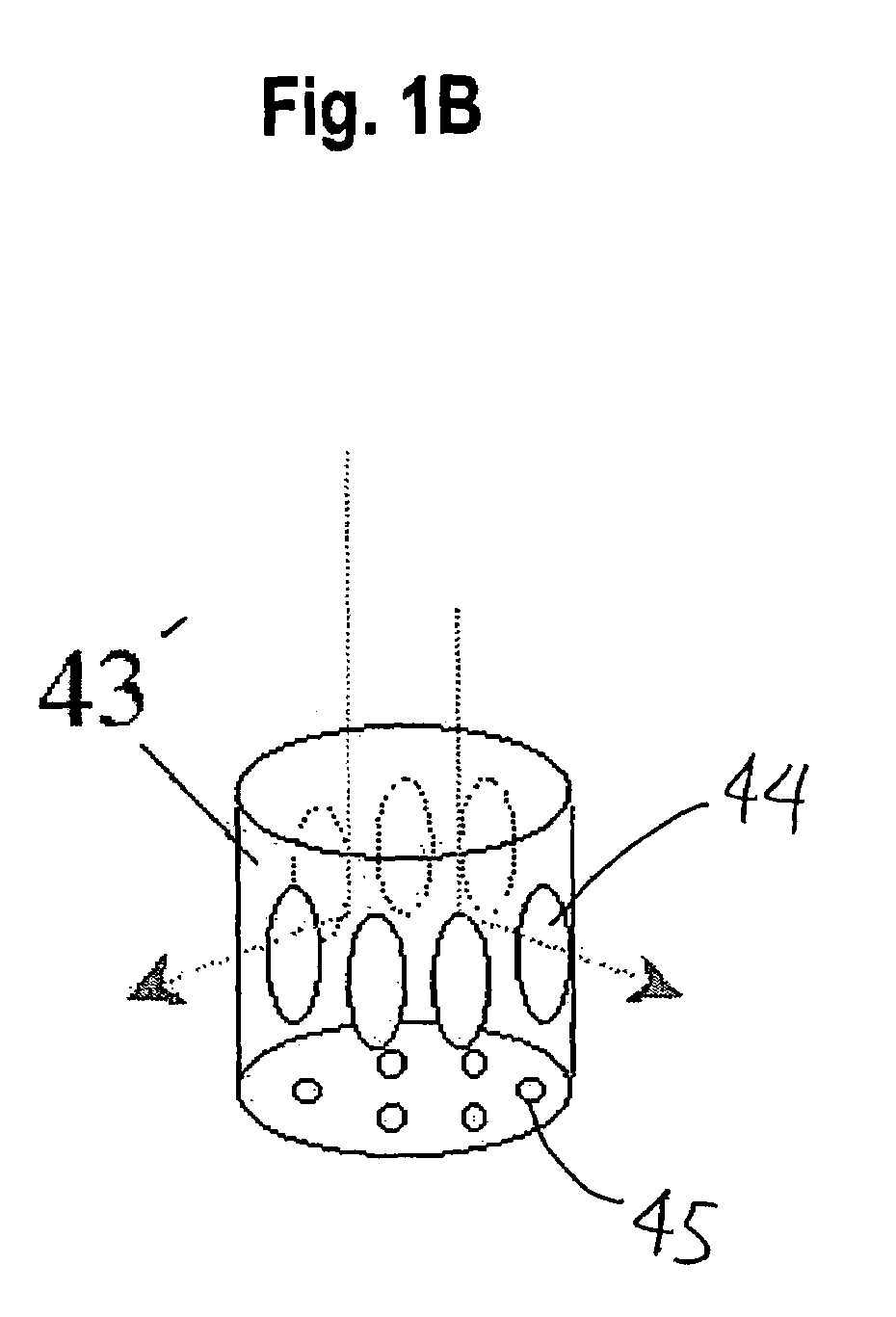Apparatus and method for forming thin film using upstream and downstream exhaust mechanisms
a technology of exhaust mechanism and thin film, applied in the direction of coating, basic electric elements, chemical vapor deposition coating, etc., to achieve the effect of reducing the impact of purge gas
- Summary
- Abstract
- Description
- Claims
- Application Information
AI Technical Summary
Benefits of technology
Problems solved by technology
Method used
Image
Examples
embodiment 1
[0222]In this embodiment, a process of forming tungsten carbide nitride (WCN) films using tungsten hexafluoride (WF6), ammonia (NH3) and tetraethoxyboron (TEB) is described. After a silicon substrate is transferred from a vacuum transfer chamber (not shown in the figure) to the reaction chamber 1, remaining moisture, oxygen, etc. are exhausted thoroughly using a turbo pump (See FIG. 1A). The substrate is moved to a given position by a vertical-movement mechanism of the substrate-heating stand 8. At this time, a gap between the dispersion plate 3 and a substrate surface is set at a value within the range of 2-8 mm (1-10 mm according to one embodiment; 3, 4, 5, 6, 7, 8, 9 mm, and values between each value can be taken). In this embodiment, the process was implemented by setting the gap at 5 mm.
[0223]FIG. 3 and FIG. 4 show a process sequence: A silicon substrate is transferred from a vacuum transfer chamber (not shown) to the reaction chamber 1. The reaction chamber is exhausted by the...
embodiment 2
[0250]In this embodiment, a process of forming tantalum nitride films using tertiaryamylimidotris(dimethylamido)tantalum: TaN(C4H9)(NC2H6)3, an organic metal material of Ta, and NH3. After a silicon substrate is transferred from a vacuum transfer chamber (not shown in the figure) to the reaction chamber 1, remaining moisture, oxygen, etc. are evacuated satisfactorily using a turbo pump 7 (See FIG. 1A). The substrate is moved to a given position by a vertical movement mechanism of the substrate-heating stand 8. At this time, a gap between the dispersion plate 3 and a substrate surface is set at a value within the range of 2-8 mm. In this embodiment, the process was implemented by setting the gap at 5 mm.
[0251]FIG. 5 and FIG. 6 show a process sequence: A silicon substrate is transferred from a vacuum transfer chamber (not shown) to the reaction chamber 1. The reaction chamber is exhausted by the turbo pump to 10−6 Torr or below. After an amount of remaining gases including moisture an...
PUM
| Property | Measurement | Unit |
|---|---|---|
| temperature | aaaaa | aaaaa |
| temperature | aaaaa | aaaaa |
| temperature | aaaaa | aaaaa |
Abstract
Description
Claims
Application Information
 Login to View More
Login to View More - R&D
- Intellectual Property
- Life Sciences
- Materials
- Tech Scout
- Unparalleled Data Quality
- Higher Quality Content
- 60% Fewer Hallucinations
Browse by: Latest US Patents, China's latest patents, Technical Efficacy Thesaurus, Application Domain, Technology Topic, Popular Technical Reports.
© 2025 PatSnap. All rights reserved.Legal|Privacy policy|Modern Slavery Act Transparency Statement|Sitemap|About US| Contact US: help@patsnap.com



